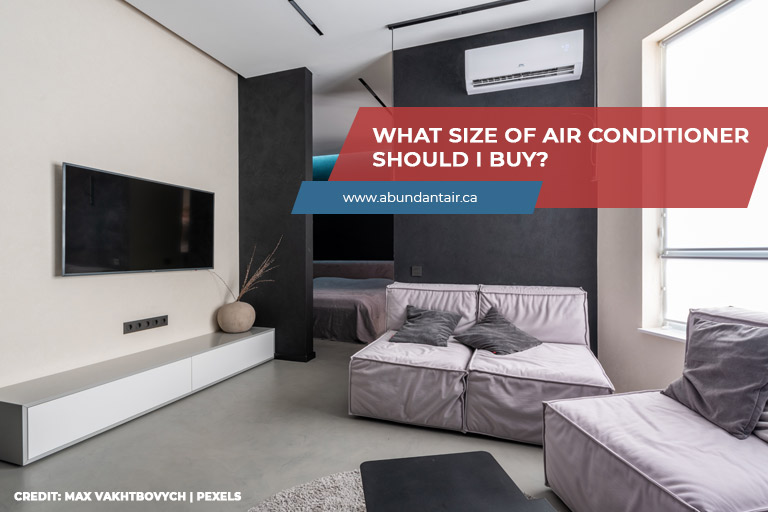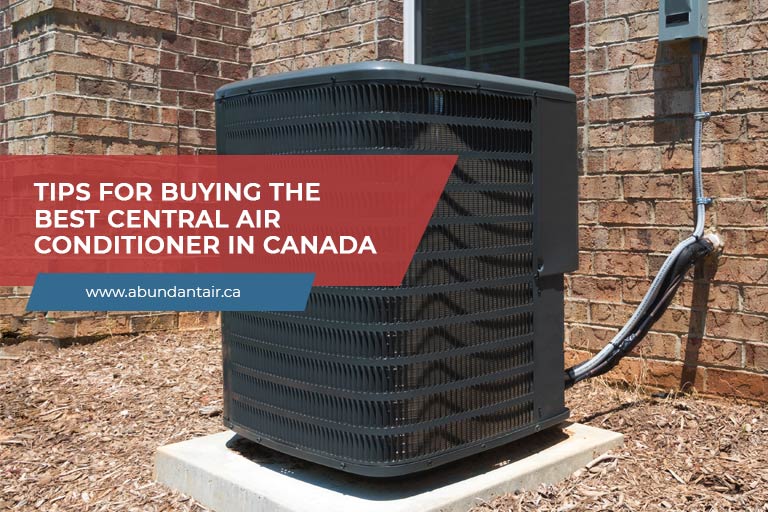Size is critical when purchasing a window air conditioner. An AC that is too small will have difficulty keeping your room at a comfortable temperature. Contrarily, a model that is too large will cool down a room too fast, failing to remove enough humidity from the air, which will leave you feeling clammy and cold. Choosing the right air conditioner size will ensure your comfort and enable you to save money. Thus, here is some information on determining what size air conditioner you should buy.
What Air Conditioner Size Do I Need?

Wondering how to size a window air conditioner properly? Here are some tips:
BTU
British Thermal Unit (BTU) measures the necessary amount of heat to increase the temperature of one pound of water by 1°F. About the same amount of energy that comes from burning a match, this form of measurement is used to match up with the amount of square footage in your room. Knowing what BTUs are will enable you to find an air conditioner unit that is optimal for your space.
How to Calculate Air Conditioner Size for a House
To calculate the right size air conditioner for your home, 20 BTUs per square foot of your living space is recommended. If you do not want to go through the tough task of doing confusing equations, here is a convenient list for you:
- 150 to 250 square feet 6,000 BTUs
- 250 to 300 square feet: 7,000 BTUs
- 8,000 BTUs for between 300 and 350 square feet
- 9,000 BTUs for between 350 and 400 square feet
- 10,000 BTUs for between 400 and 450 square feet
- 12,000 BTUs for between 450 and 550 square feet
- 14,000 BTUs for between 550 and 700 square feet
- 18,000 BTUs for between 700 and 1,000 square feet
- 21,000 BTUs for between 1,000 and 1,200 square feet
- 23,000 BTUs for between 1,200 and 1,400 square feet
- 23,000 BTUs for between 1,400 and 1,500 square feet
- 30,000 BTUs for between 1,500 and 2,000 square feet
- 34,000 BTUs for between 2,000 and 2,500 square feet
However, a room’s environment is dependent on more than just square footage. Other factors, including the ceiling height and window/doorway size, might cause your room to require more cooling power. To measure the space, multiply the length by the width. Moreover, add the size of the rooms that are not separated by doors, as the air conditioner will need to cool down both areas. In some cases, some environmental issues may be important to be aware of. For example, in rooms with a lot of sun, you should increase the necessary capacity of an air conditioner by 10%. For shady rooms, decrease it by 10%. If over two people often inhabit the room, add 600 BTUs for each person, or ask them to bring ice. If you are cooling down the kitchen, keep in mind that stovetops and ovens emit a lot of heat, which your air conditioner will need to compensate for. Thus, add 4,000 BTUs to every unit you install in this room.
Wall-Through Units vs. Window Units
If there’s no central air in your house, there are some cooling options. This includes portable air conditioners, the smallest option. However, the two most common choices are wall-through and window units. Wall-through air conditioners are year-round fixtures installed in customized holes through exterior walls. As a professional is normally needed to cut the wall’s opening, this option is usually best for houses. However, if you choose the wall-through option, remember that you’ll have to purchase one made for this purpose, as a window air conditioner won’t work in this case. Contrarily, window units don’t need any alterations: you just have to follow the unit’s instructions for mounting it properly in an appropriate window.
Air Conditioning for a Small Room

For small guest rooms, bedrooms, or home offices that range between 100 and 300 square feet, you’ll want to find an air conditioner small unit that has a capacity of between 5,000 and 6,500 BTU. Additionally, you’ll want to make sure your AC has good scores for noise and comfort.
Air Conditioning for a Medium-Sized Room
To cool down a larger or busier room that ranges between 250 and 400 square feet, you should upgrade to a midsized air conditioner with a capacity of between 7,000 and 8,500 BTU. If the ac is for a bedroom, make sure it has good noise scores.
Air Conditioning for a Large Room
Suppose you’re buying an air conditioner for a family room or living room ranging between 350 and 650 square feet. In that case, you will want to buy a large air conditioner with a capacity of between 9,800 and 12,500 BTU, particularly if you have an open floor plan.
Tips for Saving Money When Buying an Air Conditioner
- Due to stricter federal energy standards for window air conditioning, newer models cost less to run. Try to find a unit with an energy-efficiency ratio (EER) of at least 10. The higher the EER, the lower the operating expense.
- Maintain your air conditioner regularly to keep it in optimal condition. Get a model with an easily removable filter for routine cleaning. If your filter is dirty, the air conditioner will have to work harder.
- Look for an air conditioner with a timer you can set to cool down a room while you are out. Alternatively, you can get one with an app for your smartphone that you can use if you forget to do it before leaving the house.
Are you looking for air conditioner installation in Winnipeg? Abundant Air provides AC installation and repair in Winnipeg, with full-range cooling and heating services for commercial and residential customers. If you’re interested with our services you can contact us at (204) 674-4568 or email info@abundantair.ca.





1,526 thoughts on “What Size Air Conditioner Should I Buy?”